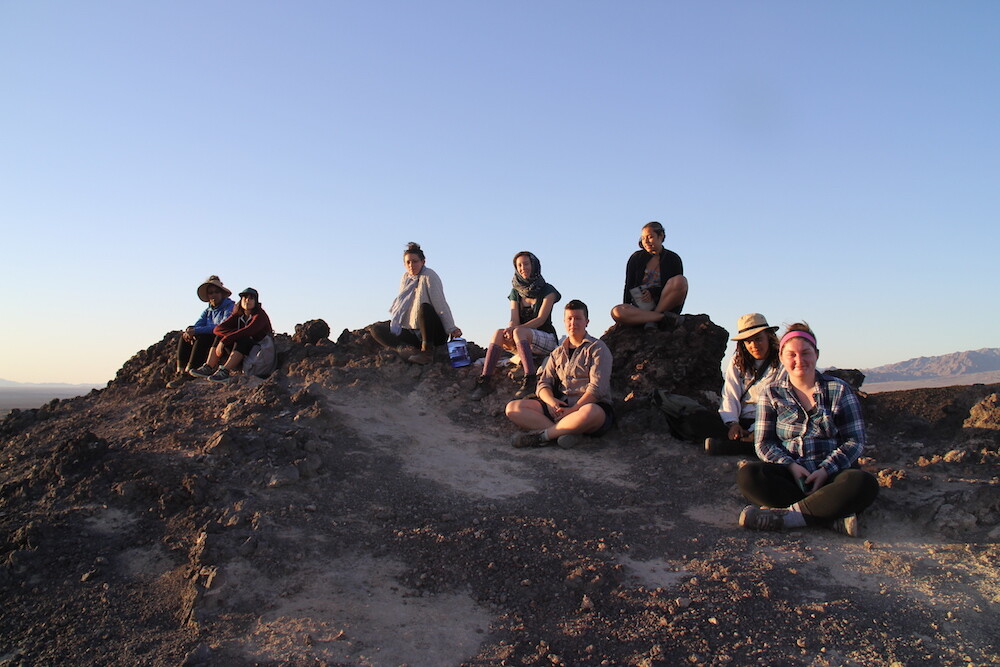From May 13 through June 10, eight Arizona State University students, pursuing a mixture of art and sustainability degrees, enacted a very near future in a remote location in the Mojave Desert. We were hosted at the Dryland Lab of the MATZA project of Séverin Guelpa (see https://matza.net).
During our project the participants were permitted 4 gallons of water per person per day. Within this context of resource scarcity, the participants could self-organize how they would govern their limited resources. The project was inspired by the work of Elinor “Lin” Ostrom, “a Californian girl” who started her academic work by studying groundwater governance in California and won the Nobel Prize in Economic Science in 2009 for her work on governance of common resources. Ostrom’s work show that it is possible for groups to avoid the tragedy of the commons; the overuse of shared resources.
This art-science project created a situation where eight individuals had to share limited resources and had to cooperate to cope with these resource constraints. The participants achieved these goals since they used only about 3 gallons of water a day. Participants initiated additional goals: addressing their collective and individual privilege/responsibility related to water use; and a desire to exist alongside one another in harmony and foster an environment where the usual patterns of domination and coercion are not reproduced.
Drylab 2023 has now ended and the eight women have returned to the present with no restrictions to water use.
Although the experiment has concluded, we will use this website to feature project outcomes. We are producing a short documentary, will write papers and other reflections on this unique experience in “extreme experiential learning.”
So stay tuned!
Project directors
Marco Janssen, Professor, School of Sustainability, Arizona State University
Adriene Jenik, Professor, School of Art, Arizona State University



